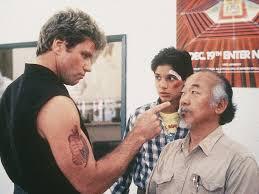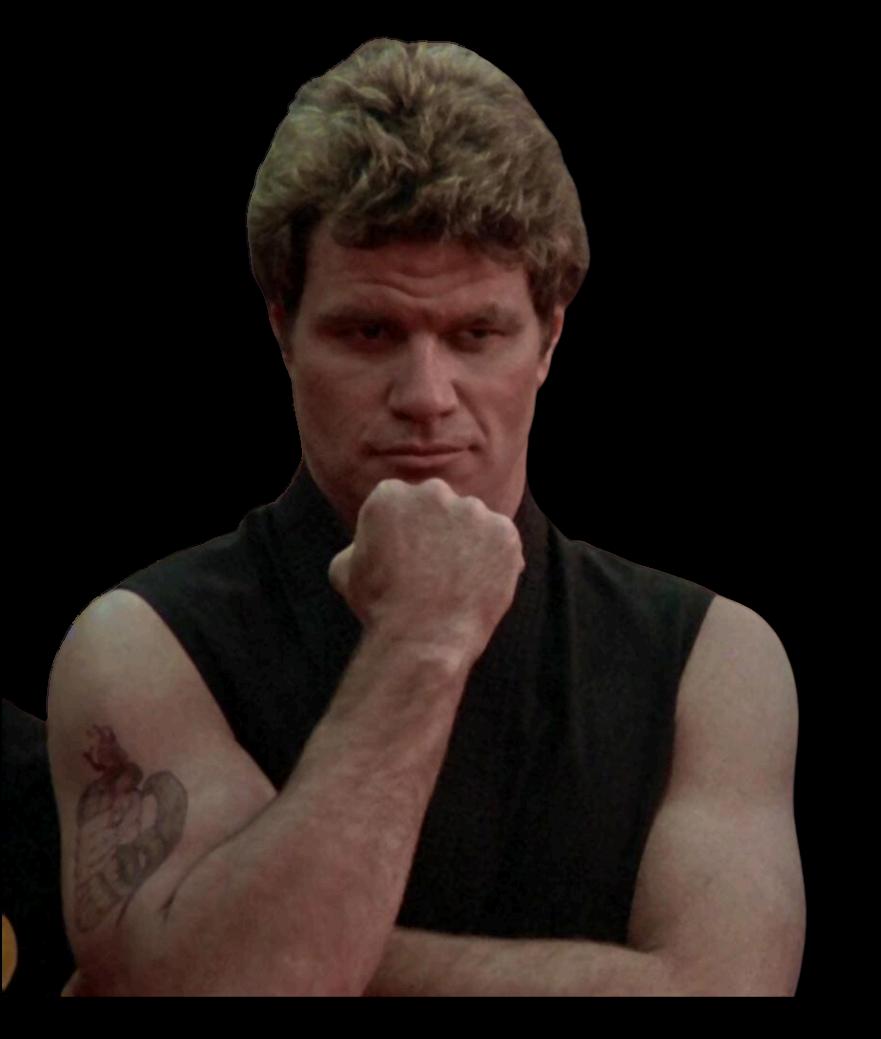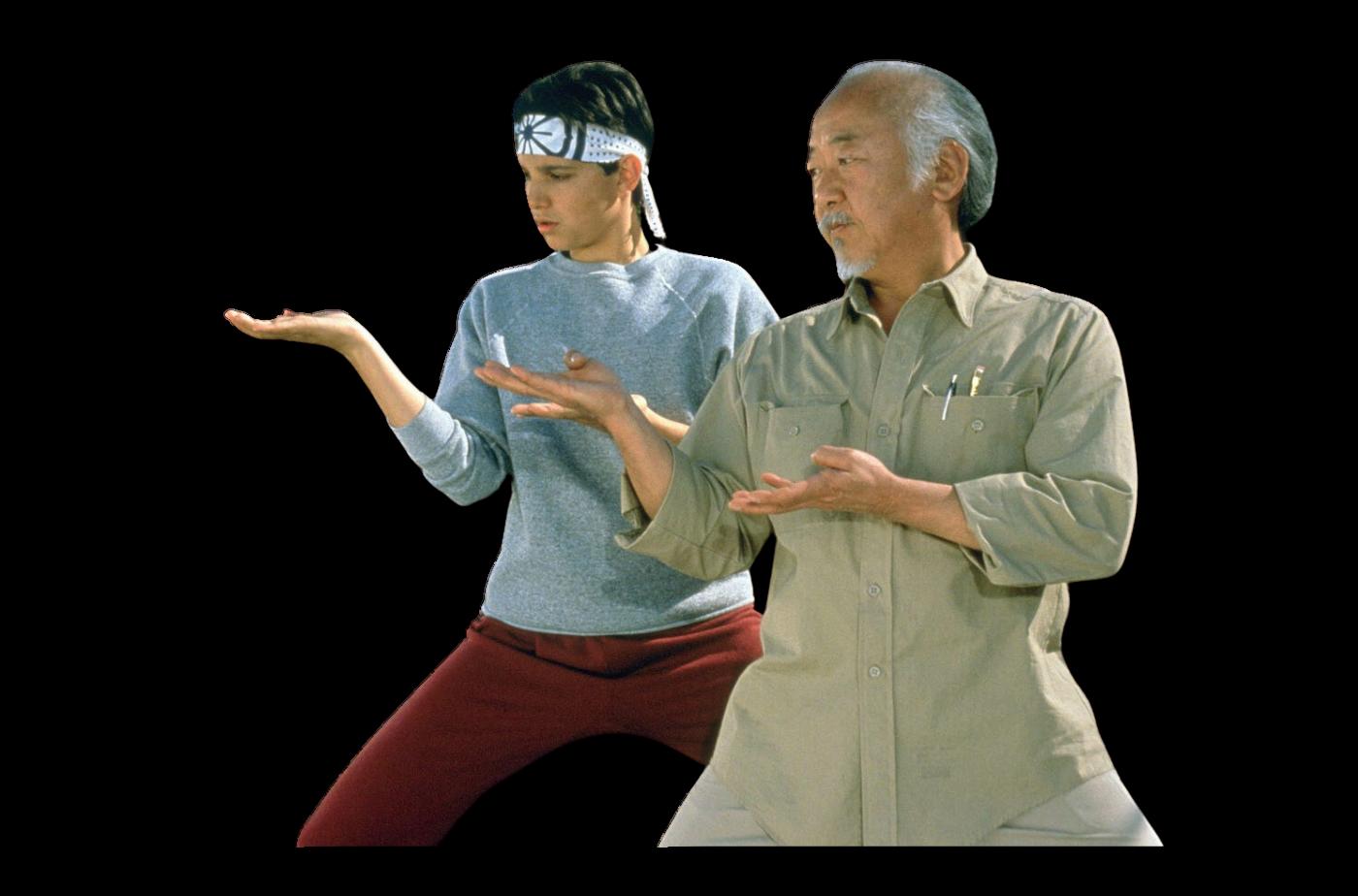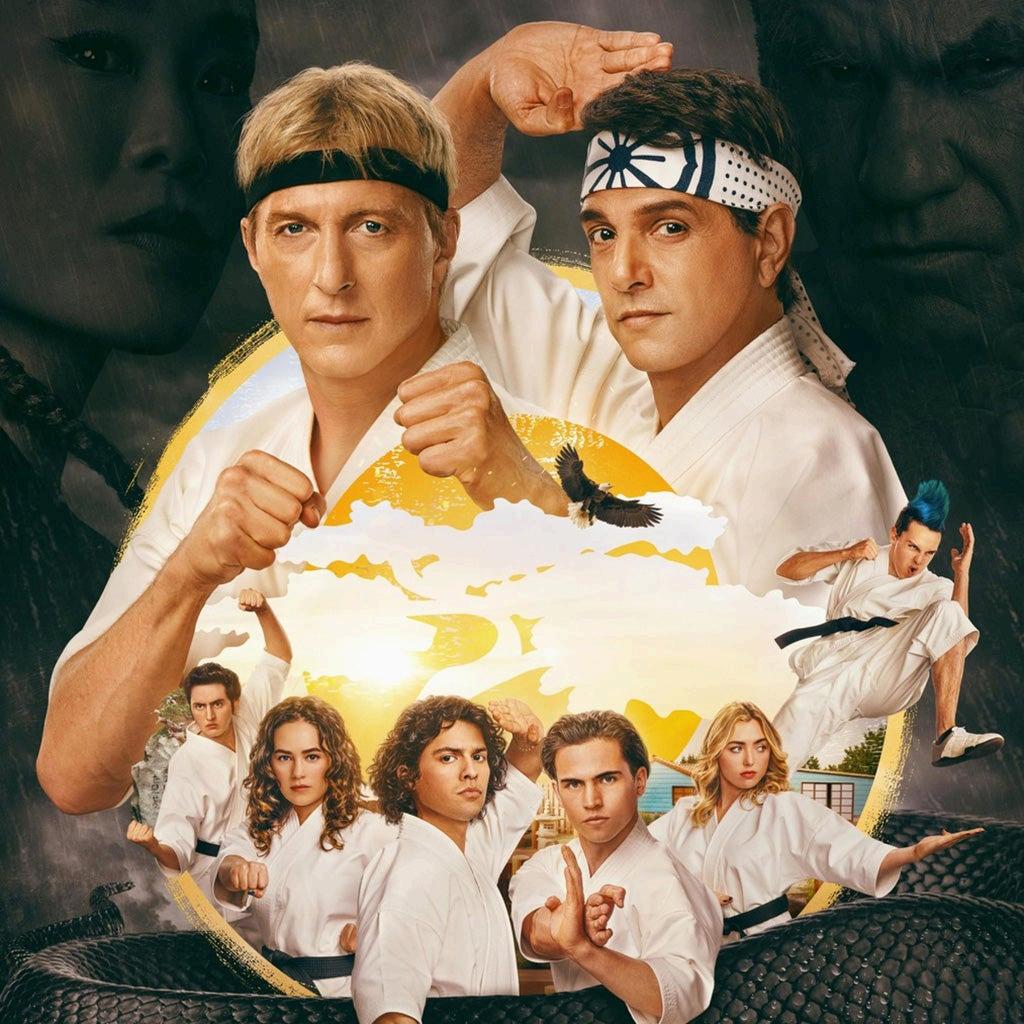
9 minute read
THE REAL VILLIANS OF KARATE KID
Written By Sumiko Nakano
Photographs courtesy of Columbia / Shutterstock)
For nearly four decades, The Karate Kid has been upheld as the ultimate underdog story. Daniel LaRusso, a kid with no background in martial arts, takes on the bullies of Cobra Kai, wins a life-changing tournament, and proves that hard work and honor always prevail. But here’s the thing: what if we’ve been rooting for the wrong guy all along?
What if Johnny Lawrence and Mike Barnes, the supposed “bad boys,” were never the real villains, but victims of their circumstances? Worse yet, what if Daniel LaRusso, under the guidance of the seemingly virtuous Mr. Miyagi, wasn’t as honorable as we’ve all been led to believe?
It’s time to dig deeper into The Karate Kid saga and reconsider everything we thought we knew about its characters, their motivations, and what truly defines a hero in the story.
Johnny Lawrence has always been cast as the quintessential bully—violent, cocky, and determined to crush the underdog. But when we peel back the layers, Johnny’s story is one of tragedy, not malice. Johnny didn’t come from a position of privilege or power—he was a broken kid, molded into a weapon by John Kreese, a sadistic sensei who turned a teenage karate dojo into a breeding ground for violence and toxic masculinity.
Kreese taught Johnny that mercy was weakness, and Johnny followed suit, becoming exactly what Kreese wanted him to be.
Fast forward to Cobra Kai, and we see the brutal aftermath of Kreese’s manipulations. Johnny Lawrence is a man haunted by his past, a tragic figure whose life has spiraled into alcoholism, isolation, and self-destruction. But instead of wallowing in his failures, Johnny embarks on a path of redemption.
He reopens Cobra Kai, not to relive his glory days, but to offer kids a way out of their own pain. His methods may still be rough around the edges, but Johnny evolves—he grows, learns from his mistakes, and becomes a better man. He does what Daniel LaRusso never does: he changes.
Let’s not forget the crane kick that sealed Johnny’s fate. Was Daniel’s victory even legitimate? Strikes to the face were supposedly against the rules in the All-Valley Tournament, yet Daniel’s infamous crane kick landed squarely on Johnny’s face. Even Ralph Macchio himself has admitted the kick was questionable. So, was Johnny truly defeated, or was he robbed of a fair fight?
In a real martial arts setting, would we be applauding Daniel’s win or calling foul? The fact that Daniel won through an illegal move cast a dark shadow over his so-called victory. And let’s be honest: Johnny never stood a chance— not against Daniel, not against the rigged narrative, and certainly not against the toxic indoctrination he received from Kreese.

Then there’s Mike Barnes, the so-called “Bad Boy of Karate” introduced in The Karate Kid Part III.
Unlike Johnny, Mike’s aggression isn’t fueled by any personal vendetta against Daniel. Instead, he’s manipulated by Terry Silver, Kreese’s equally unhinged business partner, to torment Daniel for financial gain.
Silver is the mastermind behind Mike’s vicious behavior, and Mike, eager to advance his career, falls into the trap. But does that make him evil? No, it makes him a pawn in a much larger, much darker game.
By the time Cobra Kai rolls around, Mike Barnes has walked away from karate altogether. He’s running a furniture store, living a quiet life, far removed from the violence of his youth. But when Silver drags him back into the fray, we see that Mike is not the ruthless villain he once seemed to be—he’s a man haunted by his past, a man who was used and discarded by manipulative figures like Kreese and Silver.
He’s no longer the “Bad Boy of Karate”—he’s a man trying to escape the ghosts of his youth, only to have them catch up with him.
And then there’s Mr. Miyagi—the wise, peaceful mentor we all love. Or do we? On the surface, Miyagi embodies the ideal martial arts master: calm, patient, and always in control. But when you look closer, there are cracks in Miyagi’s armor.
Time and again, Miyagi puts Daniel in harm’s way. Let’s not forget that in The Karate Kid Part II, Miyagi allows Daniel to fight in a life-or-death match in Okinawa. This wasn’t a tournament. This wasn’t about honor. This was about survival. What kind of mentor does that?
Then there was the ice-breaking scene in The Karate Kid Part II, where Miyagi essentially uses Daniel’s martial arts skills for gambling. Honor and discipline? Or exploitation?
Even in The Next Karate Kid, Miyagi repeats this pattern. He teaches Julie Pierce to defend herself, but once again, the lessons lead her straight into violent confrontations.
For someone who preaches peace and self-defense, Miyagi sure has a funny way of dragging his students into dangerous, lifethreatening situations.
How much of Miyagi’s wisdom was genuine, and how much of it was just a means to an end?
What about Daniel Larusso? While Johnny and Mike have grown as people, Daniel remains stuck in the past.
In Cobra Kai, we see a Daniel who’s still clinging to the glory of his teenage victories. He’s still quick to judge Johnny, still sees himself as the eternal underdog, and refuses to acknowledge that Johnny and Mike were as much victims as he was.
Instead of growing, instead of reflecting on his own flaws, Daniel continues to repeat the same patterns, unaware of how his arrogance fuels the rivalries he claims to despise.

Daniel may have won the tournaments, but did he ever really evolve? He won through questionable means (let’s not forget that crane kick), engaged in increasingly dangerous confrontations, and never learned to empathize with those he considered his enemies.
Johnny, on the other hand, has matured into a far more honorable and reflective figure. Mike, too, has moved on, trying to live a peaceful life away from the violence of his youth. Daniel, by contrast, is still living in the shadow of his teenage self, unable to move past the battles of the dojo.
So, who are the real villains of The Karate Kid? It’s not Johnny Lawrence. It’s not Mike Barnes. The true villains are the manipulators—Kreese and Silver —who used karate as a tool for their own twisted games. And perhaps, just perhaps, Mr. Miyagi wasn’t as infallible as we thought. The series has always been about flawed people, navigating a brutal world where martial arts was less about honor and discipline, and more about survival. Johnny and Mike were just trying to survive. And Daniel? He’s still playing a game he doesn’t even realize he’s lost.
But hey, before you roundhouse kick your Karate Kid box set into the nearest dumpster or start a philosophical debate on crane kick ethics, let’s just take a deep breath.
It’s just a movie, right? Sure, maybe Daniel’s crane kick was more of a dramatic flair than a legit move, but in some tournaments, kicking someone in the face is totally above board.
Who hasn’t wanted to settle a personal beef with a flying kick to the head? And if you’ve ever had a Monday that felt like an All-Valley Tournament, maybe you’ve already channeled your inner LaRusso—minus the crane kick, hopefully. We all need a little flashy, rule-bending victory now and then, right?
So go ahead—embrace your inner underdog, even if it means bending the rules a little. And when someone inevitably calls foul on your questionable technique or approach to life, you can always pull the classic, ‘But Daniel did it!’ move. Because let’s face it, winning’s winning… unless, of course, you’re Johnny Lawrence, who’s still processing 30 years of crane kick trauma, or Mike Barnes, who’s probably having flashbacks about contract negotiations gone wrong.
And hey, if anyone questions your methods, just channel your inner Miyagi and say, ‘Wax on, wax off’—after all, it worked wonders for Daniel’s car-selling career, so who are we to argue with that kind of life lesson?
And sure, if you’ve got a Mr. Miyagi in your life dishing out wisdom, take what you can—but maybe skip the ‘beating up teenagers in an empty lot’ part. After all, there are limits to Miyagi magic. Karate may teach us honor and selfdiscipline, but even Miyagi had moments that might not fly today. So, next time you’re tempted to settle a score with a crane kick, just remember: there’s more than one way to win a fight.

EDITORIAL NOTE
This article is intended as a parody and is not reflective of the actual storyline of the Karate Kid Movies or its Cobra Kai Counterpart.
We at IMA MAG are huge fans of the films and new series. Sadly, the Cobra kai series is ending with its 6th and final season. It has been an incredible journey that has taken everyone on a personal journey of growth, understanding and martial arts wonder.
As the promoter of the Karate Kid All Valley Tournament for years in the Los Angelas Valley in the late 1980s and 1990s, I have been connected to the series in a closer effect than others.
Some of the best martial artists were involved in both the series and films for the Karate Kid Saga.
Without people such as Pat Johnson (The Referee and choreographer for four films) passed away November 2023 at the age of 84. Pat Morita who played Mr. Miyagi passed away in November 2005 at the age of 73.
There have been rumors circulating of several spin off of the Cobra Kai series. possibly in the works. We wait with bated breath to see how and IF the story continues.










